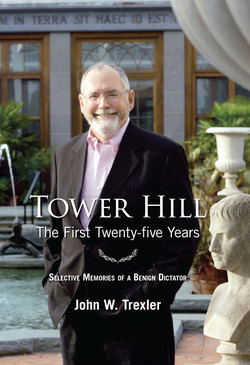Читать книгу Tower Hill - John W Trexler - Страница 8
На сайте Литреса книга снята с продажи.
The Beacon Hill House
ОглавлениеOn my one trip home that summer, I attempted to visit an estate called the Beacon Hill House in Newport. I had discovered it in a book on historic landscape architecture at the college library. The photographs revealed a garden of great beauty located in the rocky terrain of the Newport coastline, although it was set back from the famous Ocean Drive. The garden was designed by the Olmstead Brothers and owned by Arthur Curtis James. One morning I borrowed my parents’ car, drove the forty-five minutes to Newport and found the area where I thought the garden might be located, to no avail. I knocked on doors and asked whomever responded if they knew where the home of Arthur Curtis James was—the Beacon Hill house to be specific. No one had any idea of what I was referring to. Eventually, I stopped in front of a house that was almost hidden from the street, parked, and with some apprehension walked up the gravel driveway. It was clear that someone had entered the driveway too fast and made ruts, spraying gravel into the shrub plantings on either side. One of the granite bollards flanking the entrance had been knocked over and broken. I rang the doorbell and waited. The man who answered was about my age with a scratch on his face and a prominent black eye. Nervously I asked if he knew of the Beacon Hill House. He said, “No,” but told me to wait a moment. A few minutes later an older man appeared, “I understand you’re looking for the Beacon Hill House.”
“Yes,” I said.
“It was burned down years ago. What’s left is across the street.”
Sure enough, diagonally across the street were two impressive gateposts with a chain between them. I resituated my car on the street and began my adventure. I quickly deduced that this was a service entrance because I found the remains of greenhouses and cold frames. Like the Roman Forum, the Beacon Hill House was in ruins. Beyond the dilapidated greenhouses I found natural stone steps leading up to a high point and the remains of a limestone belvedere with a view of the ocean. It was complete with a mosaic compass rose. A bit further I located a second natural stone stairway that led down to the remains of a cypress lattice screen and gate posts into what was the Blue Garden—so beautifully illustrated in the book from the library. I kicked away years of accumulated leaves to find blue tile and limestone-edged pools.
The outline of the garden was still visible. Cryptomeria trees, which once served as evergreen screens, still remained. Another path led past where the house must have stood. Beyond were the remnants of Mrs. James’ rose garden, where climbing roses with yellow flowers had miraculously survived. There was a circular pool, an overlook, and a curved staircase leading down to further sections of the rose garden. A pool directly below the overlook had once been filled by water cascading over the millstone above. I continued until I found myself out in the open, standing on what must have been a great lawn leading up to the house. From there I exited through the former main entrance and followed the road until my car appeared in the distance.
The Beacon Hill House, from a postcard published in 1920
Courtesy Library of Congress
I was both exhilarated and saddened by what I had seen. I fantasized about owning such a property and restoring it to its former glory.
